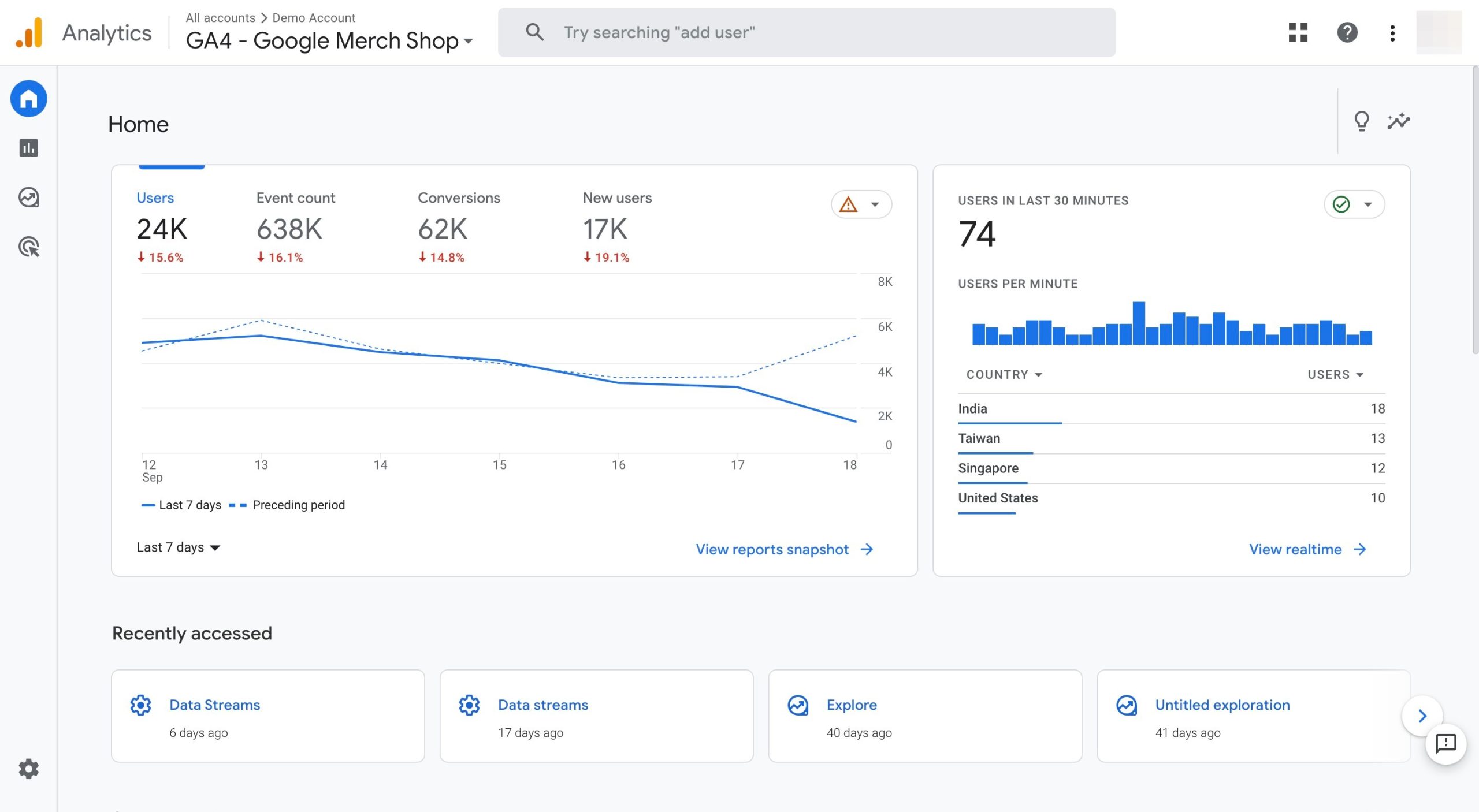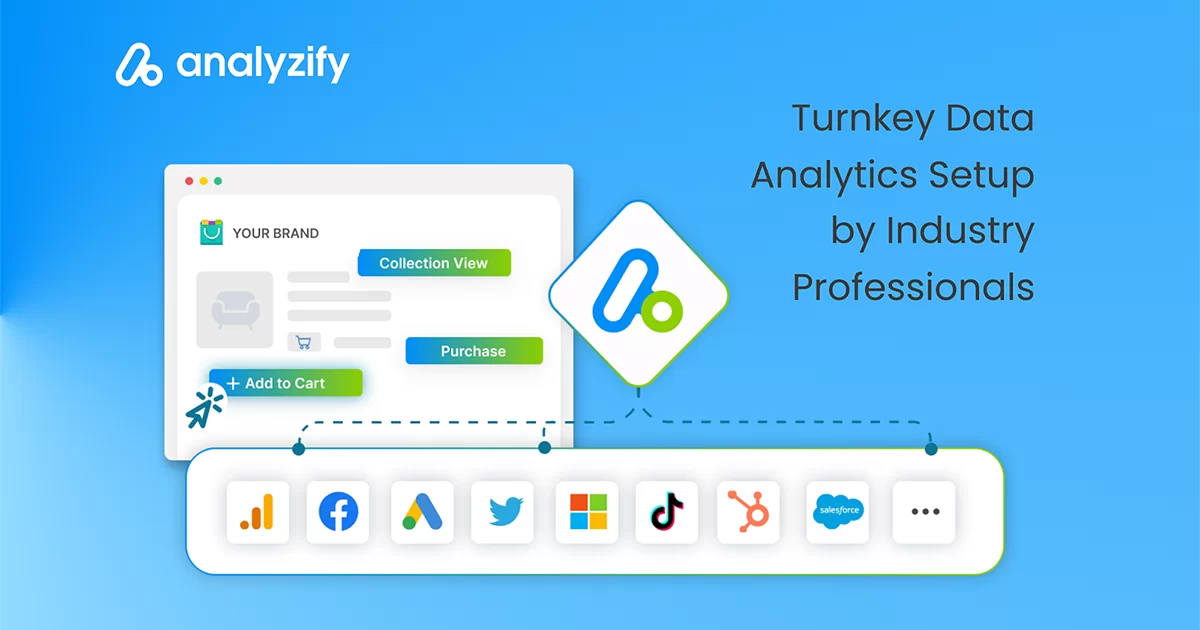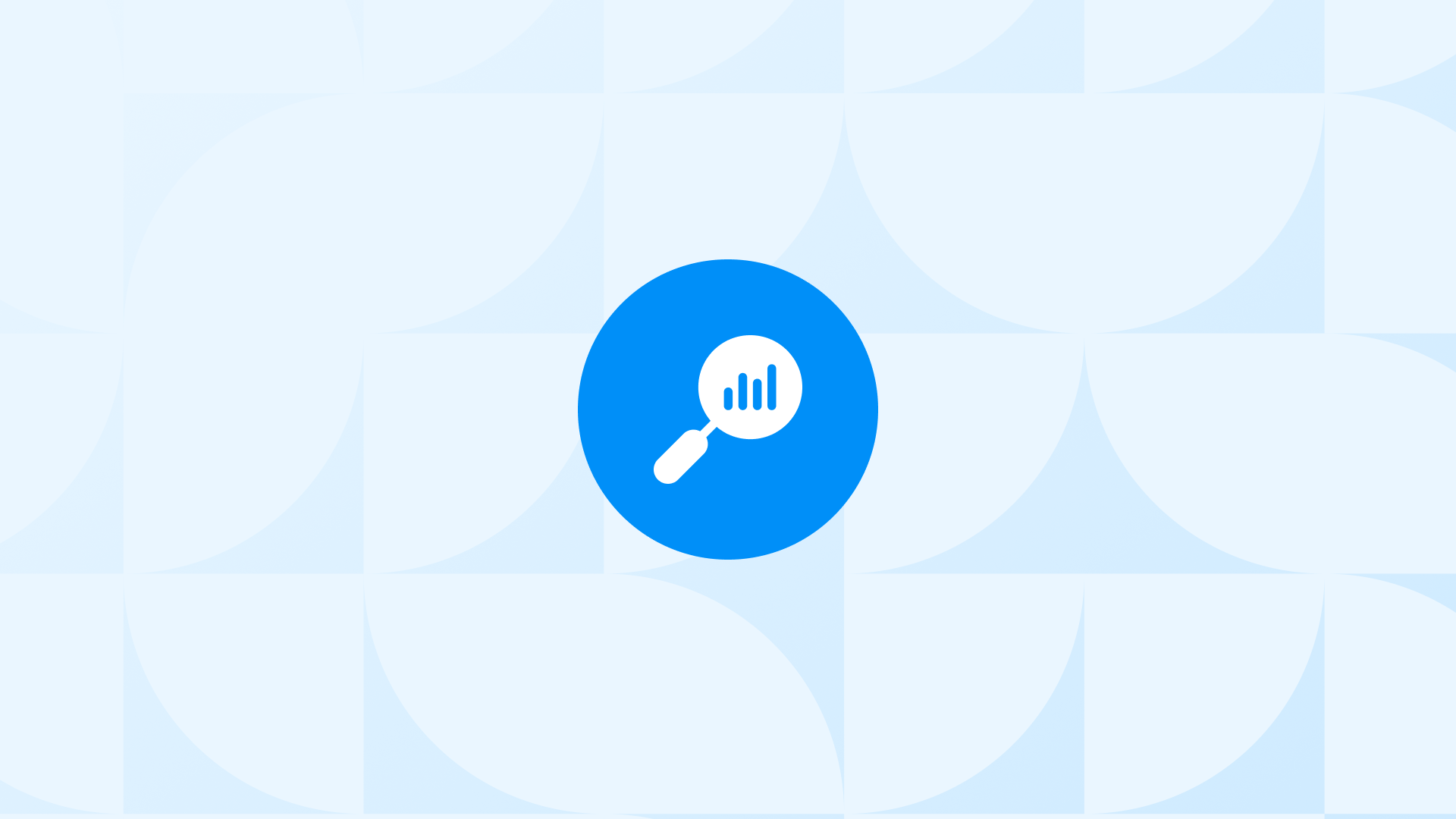The truth is that the relationship between Google Analytics and Shopify can be a bit like a puzzle at times, where the pieces don’t always fit perfectly for a 100% data match.
While it’s not possible to fix all the discrepancy issues between Google Analytics & Shopify, we can start off by identifying the causes in the background so we can find an effective solution.
Let’s get started without further ado!
Main Reasons for Discrepancy Between Google Analytics and Shopify
Before continuing with reasons for the discrepancy, you should definitely check out data freshness in Google Analytics 4 (GA4), as well. It’s a concept that refers to how long it takes for GA4 to collect and process an event from your website.
Here are the most common reasons that lead to discrepancy between Google Analytics and Shopify:
Wrong Google Analytics Setup
You don’t need to be a developer or marketing genius to set up Google Analytics on your Shopify store.

However, if you are new to data analytics, a wrong Google Analytics setup may be on the cards.
It might cause your data to be inconsistent and therefore, your marketing efforts & money may end up wasted.
To avoid such problems and secure a Google Analytics setup that minimizes the potential discrepancy issues, please take a look at the following source: Shopify Google Analytics 4 (GA4) Guidebook
You can also see our Google Analytics health check article series, which will make it easier for you to perform a proper check on your Google Analytics 4 account.
Incomplete Migration to Google Analytics 4 (GA4)
Having replaced UA, GA4 is now your default solution to data analytics with powerful features and a completely different structure.

In some cases, migration can cause some discrepancy problems.
When switching to GA4, Google Analytics 4 (GA4) properties may be created without being associated with Universal Analytics (UA).
Or, Google may automatically create a GA4 property associated with UA and provide data flow to it via Universal Analytics, which might cause you to see multiple GA4 properties.
In this case, you should compare the UA data with the GA4 data from the later-created GA4 property. This will help you ensure that your data is being collected and analyzed correctly.
To avoid such problems, you are recommended to apply the steps in our detailed guide where you can find all the necessary information about completing your migration to Google Analytics 4: A Complete Guide: Migrate from Universal Analytics to GA4
Adblockers, VPNs, Special Browsers
According to some studies, at least 42.7% of internet users worldwide have an active ad-blocking extension installed. Add to that the use of VPNs and private browsers, which is increasing day by day.
The use of ad blockers, VPNs, or private browsers may also bypass Google Analytics, resulting in data discrepancy between Google Analytics and Shopify.
A user can very easily prevent Google Analytics from being triggered to collect data with an ad blocker.
So, this user’s session and actions will not be recorded in GA and data will be missing or inconsistent.
But the solution is simple! That’s what server-side tagging is for. We will talk about this in more detail in the solutions section shortly.
Likewise, browsers with various privacy protections such as VPNs and Tor also hack Google Analytics’ data-collecting system.
For example, Firefox’s incognito mode helps hide the user data.
User Consent (GDPR - CCPA)
Browser cookies are the first thing that comes to mind when talking about a user’s consent.
GDPR and CCPA require merchants to get users’ consent before the tracking starts. Most Shopify merchants, especially the ones in Europe, use Shopify GDPR Apps to make their stores GDPR compliant.
Although the data transfer between Shopify and Google Analytics is interrupted by this GDPR consent, this type of data discrepancy is acceptable under these regulations.
iOS & Safari Limitations
All browsers have different 3rd party cookie policies. Safari, on the other hand, is a special browser that shortens the lifetime of the cookie and makes tracking difficult.
Systems that use 3rd party cookies such as Google Analytics and Facebook Pixel, can be affected by Safari’s difficulties. In addition, there may be inconsistency and incompleteness between the data transmitted between e-commerce infrastructures such as Shopify and Google Analytics.
Moreover, with the changes iOS, a new app monitoring feature was introduced: ITP aka intelligent tracking prevention. Sounds good, doesn’t it? With this feature, app owners have to ask users for permission to monitor their data.
One of the reasons for inconsistent data reported to Google Analytics is due to this iOS update.
The good news is that there is a solution to this problem. Make sure to check out the Solutions section below.
Visitors Don’t Fully Load the Pages
Sometimes, visitors may leave your website immediately after making a payment for an item, without waiting for the Thank You page or order confirmation page to load.
Therefore, they can prevent their transactions and data from being reported to Google Analytics.
Also, one of the reasons for this is that some payment gateways do not direct users to the Thank You page. In such cases, inconsistencies arise between Google Analytics and Shopify.
Using Google Tag Manager on Shopify helps with this problem because GTM renders the scripts faster. The server-side tracking solution is an even better solution to this matter. You will learn more about it below.
Shopify Apps for Subscription & Upsell & Checkout
Many stores use dynamic Cross-sell, Upsell, and Checkout apps to increase the average cart amount and improve the customer experience.
However, most of these apps may sometimes work against Shopify’s native flow. Therefore the tracking doesn’t work as expected. The apps have their own Google Analytics integrations but it doesn’t always work great.
In other words, the scripts of these applications may prevent them from working properly on the confirmation page of your order.
Thus, your Google Analytics account may not be able to accurately detect these recurring sales, upsells, or other actions.
Custom Page Builder Apps
Page builder Shopify apps like Pagefly, Gempages, or Shogun always need special Google Analytics integration to keep track of actions and events on their pages.
Providing this integration for all elements may not be as easy as it seems, and oftentimes you cannot properly track the data on these pages in your Google Analytics account.
If you are using a Page Builder app, especially on your landing pages; this can be just another reason for your data mismatch between Shopify and Google Analytics.\n\n
Potential Minor Reasons for Discrepancy
While some of the reasons are minor and rare, they still occur.
One of them is that the time zone of your Shopify store is different from the time zone in your Google Analytics account.
You will probably see different results when you check the data for the same period on both platforms.
Another rare cause is too many products in one transaction. If the transaction sent to Google Analytics has a large number of products and its size is greater than 8kb, Google Analytics will not be able to save it in the database. This is a very rare issue but it can still happen.
We also recommend that you take a look at the details related to post purchase pixel tracking on Shopify, which is an important issue on a Shopify basis
Solutions to Data Discrepancy between Google Analytics and Shopify
Data inconsistencies that lead to discrepancy might occur for many reasons, such as the ones mentioned above.
But don’t worry. We have solutions for most if not all, of these!
Analyzify - Data Analytics for Shopify
In our experience, around a 10% to 12% discrepancy between Google Analytics and Shopify Analytics can be considered normal.
More than 15% of inconsistency requires action and problem-solving. Analyzify provides you with the best possible data analytics setup and solves most of your potential problems.

Meeting all your data reporting and monitoring needs for Shopify stores, Analyzify is designed to provide a solid tracking foundation to help you fix problems with expert support.
With the most-loved data analytics app on the market, which has received a flawless 5.0 rating from more than 200 reviewers, you get:
A guided setup that helps you set up data layers, GTM, GA4, and more in minutes.
Complete ecommerce tracking, with Google Ads Enhanced Conversions and integrations with 10+ other solutions such as Google Analytics 4, Google Tag Manager, Google Ads, and more.
Real-time troubleshooting to audit your data analytics setup and offer solutions.
This way, it becomes easy to solve your current or potential Shopify app integration issues.
Furthermore, suppose you use different page builder applications such as Pagefly or Gempages and like to design custom pages.
In that case, we must say that the events and actions on these pages are largely not reportable to Google Analytics.
At this point, Analyzify can help resolve issues caused by the Shopify apps you want to use.
We also know that many stores fail to set up GDPR properly and encounter inconsistencies in data reported to Google Analytics.
One of the benefits that come with Analyzify is that it makes your setup healthy to minimize this kind of a problem.
Analyzify Server-Side Add-on
Like many, you may be using ad-blockers.
But if you are a store owner or marketing professional, you don’t want your users to use them, and you want to keep track of their data.
Adblocking apps or Opera’s built-in ad-blocking feature can prevent data reporting to your GA account in several ways.
Some of these are blocking 3rd party cookies and sending requests to the blacklist. At this point, you can remove the effects of these adblockers on your own server with Analyzify Server-side tagging.
With Analzify Server-side tagging, you can have more control over the data you collect.
There are also many advantages of moving to your own Google Cloud server, such as faster page speed or better customer data security.
On the other hand, Analyzify Server-side tagging not only helps you get rid of adblockers, but also helps you bypass Safari and Mozilla’s ITP (Intelligent Tracking Prevention) privacy features.
As you may know, Apple’s ITP algorithm blocks the ability of a tracker or store owner to recognize and track users over longer periods of time.
Therefore, many Shopify store owners cannot properly initiate remarketing and retargeting ads for Safari users due to discrepancies and lack of data.
At this point, Analyzify increases the impact on your data and, therefore your ads by blocking both ITPs and ad-blocking applications with its Server-side feature.
Expert Help to Solve Shopify Discrepancy Issues
On the other hand, you can fix some potential minor problems with expert help without using any apps or plugins.
You can get this help from Shopify Experts, agencies, or freelancer experts on platforms like Upwork.
Depending on the specific problem, getting this service for a fee can sometimes be a quick and effective solution.
Other Shopify Apps
Finally, you can take a look at other applications that serve in this regard. For example, you can compare applications that provide data analysis services for Shopify and choose the best one for you.
Of course, some data discrepancies between Google Analytics and Shopify Analytics are inevitable. Even a great setup can’t prevent them sometimes.
But in almost all cases, it is not difficult to understand the causes of these discrepancies and find solutions to them.

































